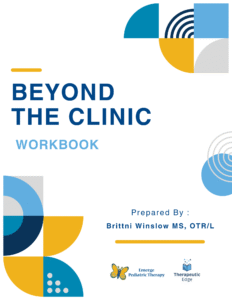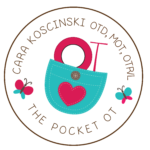
Cultural sensitivity in the medical field is necessary. Our AOTA Code of Ethics mandates we provide cultural competence. I go a step further and work towards cultural humility.
Joy Agner writes in AJOT, “Although cultural competence has provided an important initial conceptual framework for the field, I argue that it is time to move toward a practice of cultural humility, which is defined by flexibility; awareness of bias; a lifelong, learning-oriented approach to working with diversity; and a recognition of the role of power in health care interactions” (2020).
Here’s a wonderful article for more information. Our view of the world around us depends on our own memories, how we were raised, the opinions we form, the values we hold, and our reactions to the world around us. Culture includes a person’s belief system including solutions to problems and their responses to illness. It’s so much more than race and ethnicity! Our age, gender, and geographic area greatly influence our views.
**WARNING** this article provides awesome resources throughout so be sure to click on each link for the helpful article.
When we show cultural humility, we understand that another person’s values differ from our own. Therapists commonly involve members of the family in treatment planning, especially in pediatrics. “Another term, culturally competent health care, requires that the health professional be sensitive to the differences between groups, to the differences in outward behavior, and also to the attitudes and meanings attached to emotional events such as depression, pain, and disability. This model is used to improve the quality of care by recognizing culture’s influence” (Journal of Medical Ethics) Letting go of our own biases and limitations of our own knowledge are important first steps.
 Here are five ‘Out of the Pocket‘ tips to help therapists to become more culturally sensitive:
Here are five ‘Out of the Pocket‘ tips to help therapists to become more culturally sensitive:
1. Common Sense Media has a program called, “Facing History and Ourselves.’ It’s originally designed for high school students but I find it quite useful to train staff, therapy students, and to learn more about other cultures. Click here for the link.
2. Since we work with motor skills and we often use gestures to show our emotions, I found this article on gesturing from Huffington Post extremely helpful. When I travel to give CEU courses, I am always careful when using gestures. Non-verbal cues such as clothing, behavior, and greetings should be reviewed. Here’s a resource for you from Entrepreneur.com
3. As a trauma-informed practitioner, I understand that knowing my own beliefs and culture is the first step. Never force eye contact. Many children find eye contact to be too intense. In fact, looking directly at someone might cause them to move to a stress-based chemical reaction. Our job is to use our therapeutic use of self. This means using communication methods that are COMFORTABLE for our children.
4. Ask! Our treatment plans depend on successful carryover at home. Don’t be afraid to ask about specific beliefs and values the family has. When asking, assure them that you are willing to adapt your treatment to fit into their familial values. You may be surprised to find that trust is built faster when you aren’t afraid to speak up and admit you don’t know.
5. Family roles can be different for everyone. For example, women used to be expected to run the home and not work outside of the household. Today, we are fighting for equal pay for women in all occupations. Who will be carrying over the treatment plan at home? Will there be a need for different visual schedules than those you’d usually create? How does self-care work in the home?
MORE RESOURCES: Here’s an article I enjoyed reading when preparing for this post. It’s from the National Institute of Health. This wonderful resource by the American Psychological Association gives many helpful tips and information when working with the Latino population. I LOVE this resource titled, ’30 Ways to Become a Culturally Sensitive Educator.’



